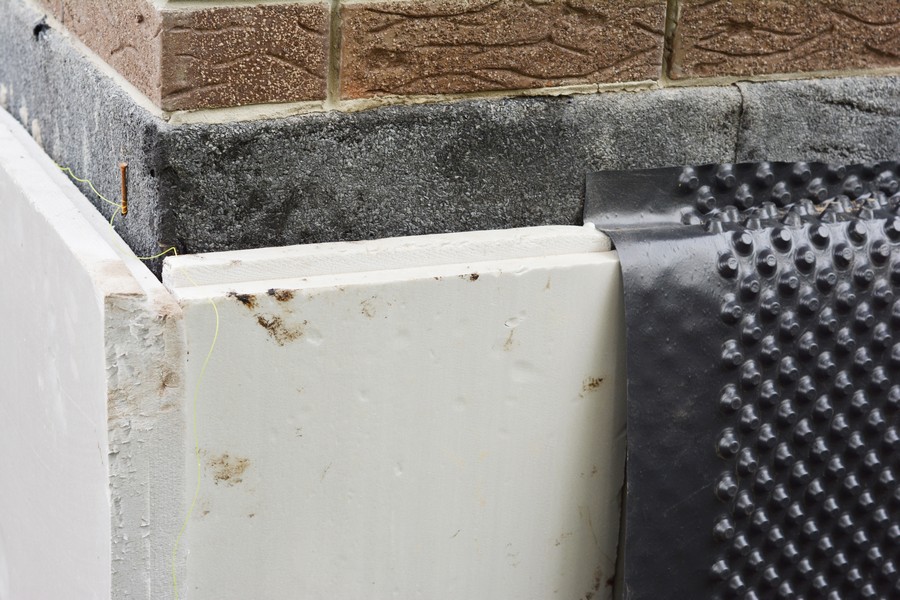Contact Sussex Damp Experts Now to Speak With an Expert.

Basement Tanking is also known as cellar tanking and is used to achieve damp proof rooms. This cavity drain membrane system consists of an interior application of waterproof cavity drain membranes directly onto the walls, floor, and occasionally the ceiling of an underground area. This material will act as a barrier to keep moisture out of the walls and floors.
This process is particularly important on underground structural waterproofing, commonly used as a method of damp proofing the building. Several household and commercial applications for structural tanking range from basements and cellars to subterranean parking garages and new constructions with earth retaining walls.
The amount of protection provided by tanking is determined by a number of elements, including the hydrostatic pressure surrounding the property foundations and any external motions or vibrations that might cause fractures or damage to the tanking material. However, if the climate is right and the tanking is appropriately done, it might be a very efficient way to keep a space dry.

Tanking is a basement waterproofing method that has been used for decades in basements, cellars, and other underground areas. The tanking will eventually result in a smooth concrete wall surface that is both visually attractive and protects against moisture infiltration and consequent damp issues.
Tanking was created to keep hydrostatic pressure from the soil surrounding a property’s basement level at bay. Underground walls would often fracture or leak if they weren’t tanked.
“Type A” waterproofing systems are commonly referred to as cementitious tanking systems. Type A is an industry name derived from BS8102 (the British Standards Institute’s structural waterproofing guidelines). This implies that this type of waterproofing forms a barrier against moisture infiltration but does not actually remove any water.
Besides help avoiding damp basements, another advantage of basement tanking is to protect the above rooms from rising damp.
There are two major options for waterproofing a basement with wet walls:
There’s some misunderstanding regarding what constitutes cellar tanking. Above-ground damp proofing and cavity drain membrane systems as part of a basement drainage system are now referred to by the name.
The application of a liquid waterproof coating/cavity drain membranes (tanking slurry) to the walls and floor of a cellar is known as cellar tanking or basement tanking. This chemical damp proof course is used to cure wet walls by keeping water from getting in and making the walls waterproof indefinitely.
Damp walls are common in cellars because the walls are below ground. Water from the retaining earth can make its way through the walls and into the basement, frequently resulting in penetrating damp and rising damp. Moisture can transport salts and minerals through the wall as it flows through. Damp walls are chilly, which leads to condensation and, eventually, mould. Slurry tanking is meant to address these concerns. It’s sprayed directly on wet walls. When the tanking slurry dries, it produces an impenetrable waterproof barrier that keeps water out and damp at bay. Unlike a cavity drain system, Tanking slurry prevents water from entering your cellar rather than allowing it in and regulating it until it reaches an evacuation point.
The process of tanking can be done in every room. However, it is of the most importance in underground structures or walls or floors that contact directly with the ground.
Cellars are sometimes wet and useless for anything more than keeping the occasional bottle of wine and an old can of paint. You’ll need to maintain your cellar or basement dry if you want to make full use of it. Tanking systems cover the walls and floors with an impervious waterproofing layer, which helps keep cellars dry and permits a more diverse range of use for these particular areas.
Tanking damp rooms is common, especially if they are below ground level. Damp walls not only cause aesthetic difficulties, but they may also make your house feel chilly, which can devolve dangerous health problems. Tanking a room may help combat mould and damp issues while also preventing water from infiltrating your structure. It’s essential in a basement conversion of an already existing basement.

Contact Sussex Damp Experts Now to Speak With an Expert.
In the following situations, tanking is prone to cracking and failure:
Other basement waterproofing solutions may be a better match if tanking is not an option or if your existing tanking has failed due to the reasons listed above. Please get in touch with us for a specialised consultancy of your requirements.
[topic-cluster id=”413″]
Tanking might cost as little as £xx per m2 to waterproof a wet cellar. However, keep in mind that lowering the floor level improves headroom costs between £xx and £xx per m2.
However, in some instances, prices might reach £xx-xx per m2, such as:

You can rely on Sussex Damp Experts if you have a place underground that is suffering from water infiltration and dampness. We’ve used a variety of waterproofing and tanking methods on projects ranging from small residential restorations to big commercial projects, including car parks, tunnels, and new construction. Whatever your project includes, if it needs expert waterproofing, Sussex Damp Experts is the company to call.
The first step is to schedule a survey with one of our experienced surveyors to determine the source of water intrusion and provide cost and the type of work recommendation. You can reach out to our knowledgeable staff by calling 01273 257 765.


[sseo-reviews-list category=’3′ type=’Slider’ limit=’3′ textlimit=’250′]
Contact Sussex Damp Experts Now to Speak With an Expert.